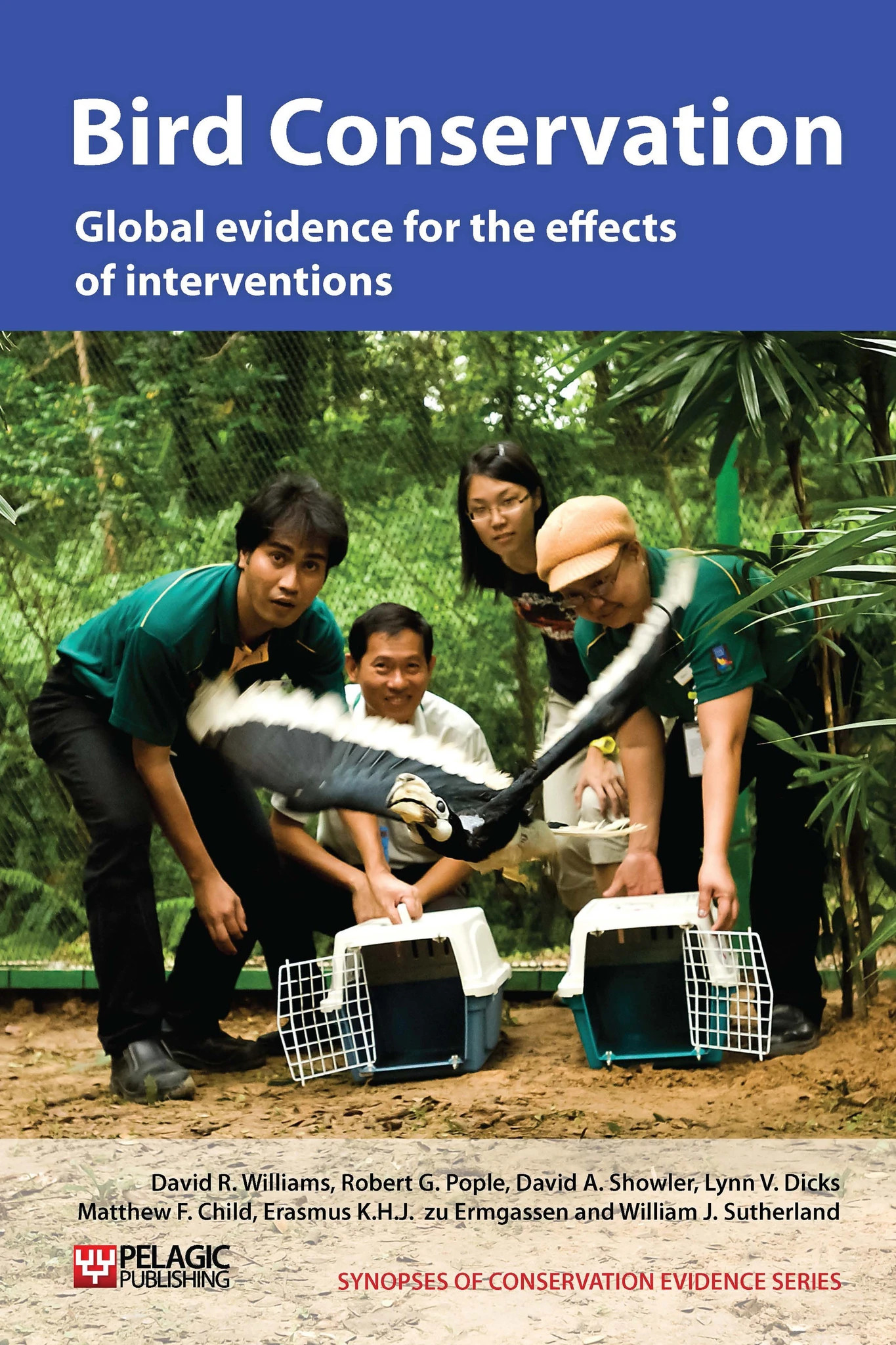Translocate gamebirds
-
Overall effectiveness category Trade-off between benefit and harms
-
Number of studies: 7
View assessment score
Hide assessment score
How is the evidence assessed?
-
Effectiveness
50% -
Certainty
47% -
Harms
35%
Study locations
Supporting evidence from individual studies
A before-and-after study in Iowa, USA (Terry & Varland 1981), found that a population of 16 eastern wild turkeys Meleagris gallopavo silvestris (five males, 11 females) translocated in February 1975 and 1976 from southern Iowa and Missouri, into an area with no resident turkey population, found that the introduced population grew 470% within three breeding seasons, despite slow population growth in the first year (13%). Turkeys had dispersed across an area of 83 km² by the 3rd year after release. Birds were captured with rocket or cannon nets, transported in individual wooden crates, held overnight in an unheated building, before being equipped with a radio transmitter and released. Dispersal and nesting success were calculated from observation and radiotelemetry data.
Study and other actions testedA replicated study of 42 adult and 35 immature ruffed grouse Bonasa umbellus translocated from Illinois, USA, to Creek State Forest, Missouri, in autumn 1986 (Kurzejeski & Root 1988) found that 25% of translocated birds survived until May 1987. A maximum of eight of 37 females survived until the breeding season. Mortality rates were highest in the post-release period, with 15 grouse dying within seven days of release. Eighty-six percent of mortalities were attributed to avian or mammalian predation. Birds injured in transit did not have a lower survival rate than those without visible injury at the time of release.
Study and other actions testedA small controlled study in managed grassland in Illinois, USA (Westemeier et al. 1991), found that 20 of 24 greater prairie-chicken Tympanuchus cupido eggs, transferred between two sites successfully hatched. This success rate of 83% was significantly higher than the 45% success for 112 eggs not exchanged between populations.
Study and other actions testedA before-and-after study in Sawtooth Valley, Idaho, USA (Musil et al. 1993), found that following the translocation of 196 greater sage-grouse Centrocercus urophasianus in March and April 1986 and 1987, four of 17 radio-tagged birds (24%) in 1986 and 11 of 27 in 1987 (41%) survived into the summer, with 79% of deaths occurring in the three weeks immediately after release. The number of observed lekking sites increased from one to six by 1987, with one translocated hen nesting in 1986, and seven in 1987. Three of these nests were fertile, producing 14 offspring.
Study and other actions testedA controlled study between March 1997 and September 1998 in Georgia, USA (Theron et al. 2006), compared the survival and reproduction rates of 74 translocated and 166 resident northern bobwhite Colinus virginianus. No differences were found between the survival, nest production, or nest survival rates of relocated and resident bobwhites using direct observation and radiotelemetry data. Fifty percent of relocated and resident bobwhites died within 123 and 129 days of capture, respectively, with avian predation the greatest cause of mortality (53.3%). Home range size and distances moved from release sites were also all similar for relocated and resident bobwhites. Subsequently, in March and April 2000-2002, 202 wild bobwhites were translocated to three different sites identified as having low population densities relative to surrounding areas. Significant population growth was observed at two of three translocation sites relative to non-translocated areas (108% vs. 16.5% and 56.7% vs. 12.4%, respectively). The third site showed a non-significant increase in population at the relocation site compared to non-relocation areas.
Study and other actions testedA replicated study in Strawberry Valley, Utah, USA (Baxter et al. 2008) examined the survival of 141 female greater sage-grouse Centrocercus urophasianus introduced into a resident population of 150 during the breeding seasons of 2003-2005. Survival rate was 60% in 2003, with all surviving birds integrated into resident sage-grouse flocks. Across all years, 36% of newly translocated birds, and 73% of females in their second year after translocation attempted nesting. The source populations were tested for presence of infections (in particular Salmonella pullorum) prior to translocation. Individuals were captured shortly after sunset, packed in cardboard boxes (30.5cm x 22.9cm x 30.5cm) for 10hrs transit, and equipped with radio-transmitters before release the following morning. The release site was close to an active lekking site, with sagebrush available for immediate cover.
Study and other actions testedA replicated study reviewing a translocation programme in 2003-6 in the western Aleutian Islands, Alaska, USA (Kaler et al. 2010), found that 15% of 13 newly translocated female Evermann’s rock ptarmigans Lagopus muta evermanni died within two weeks of release, but that confirmed overwinter mortality was similar for translocated and resident females (30% of ten translocated females known to have died vs. 33% of six resident females). All surviving females nested, laying on average eight days later than 16 resident females (16th June vs. 8th June) and producing significantly fewer eggs (average of 6.8 eggs/clutch vs. 8.3 eggs/clutch). Egg size and nest survival were similar between resident and translocated females, whilst brood survival was higher for translocated females (85% for eight translocated females vs. 25% for 13 residents). Fecundity was also higher for translocated females, but this difference was not significant (0.9 female fledglings/translocated female vs. 0.3 male fledglings/resident female). In total, 75 birds were caught on Attu Island, held for up to 48 hours and fed on melon whilst being moved and then released on Agattu Island immediately upon arrival. One male bird died during transit.
Study and other actions tested
Where has this evidence come from?
List of journals searched by synopsis
All the journals searched for all synopses
This Action forms part of the Action Synopsis:
Bird Conservation
Bird Conservation - Published 2013
Bird Synopsis





)_2023.JPG)














